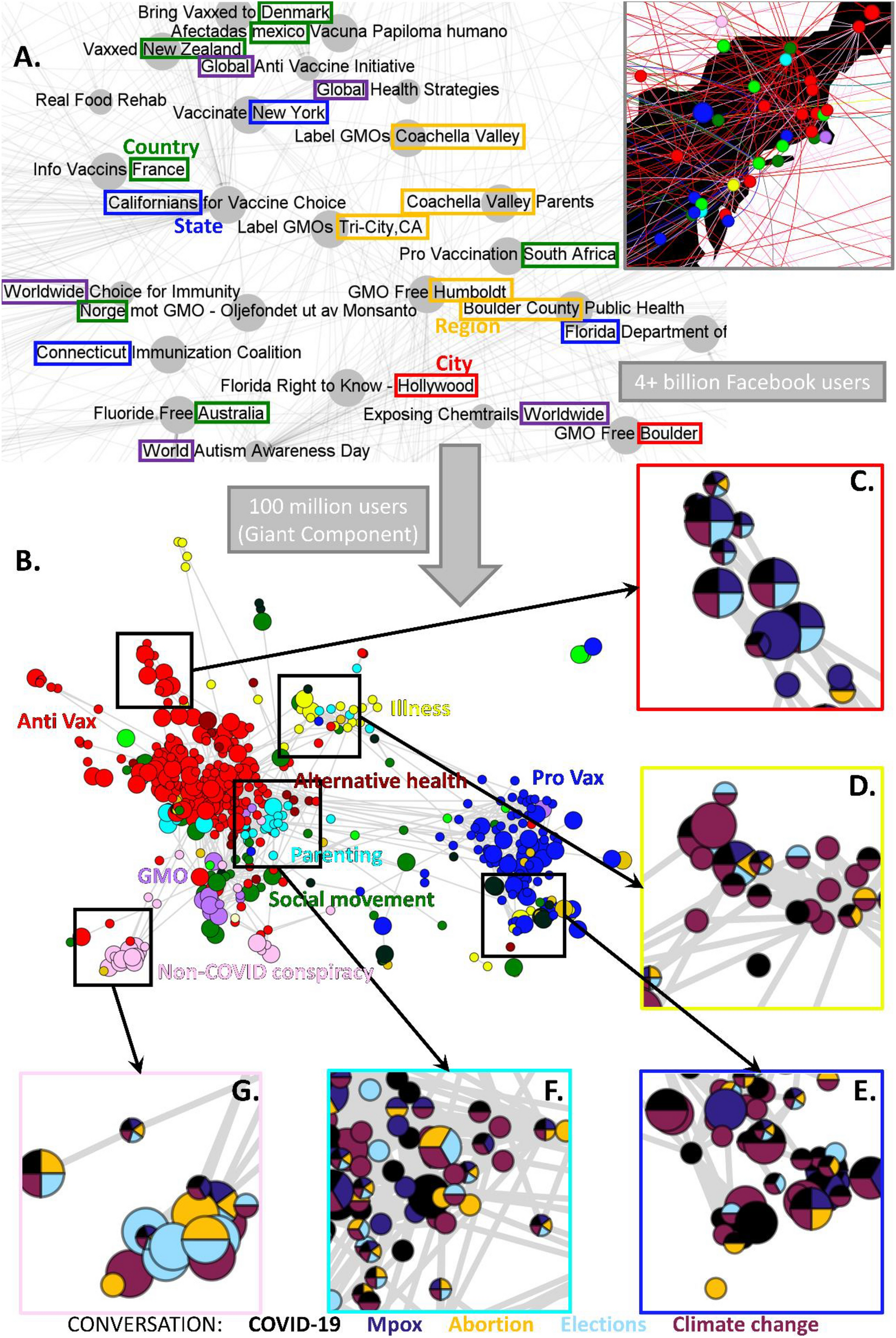Illari, L., Restrepo, N.J. & Johnson, N.F. Rise of post-pandemic resilience across the distrust ecosystem. Sci Rep 13, 15640 (2023). https://doi.org/10.1038/s41598-023-42893-6Summary
Distrust and misinformation, especially in the context of public health, science, and elections, have become pervasive threats, with the pandemic intensifying reliance on online communities for information. The rise of online distrust prompted various mitigation strategies on platforms like Facebook, which saw a significant increase in user engagement during the pandemic. However, despite these efforts, distrust remains rampant. This study reveals that post-pandemic distrust has evolved into a complex web that intertwines various topics, locations, and scales, making it resilient to current mitigation strategies that target specific areas.
By analyzing Facebook data of about 100 million users, the study found that distrust in one topic within a community can be reinforced by distrust in another topic or by other interconnected communities. This interconnectedness suggests that effective mitigation requires a more holistic approach, blending topics and scales. The research also employed agent-based simulations to demonstrate the effectiveness of different mitigation strategies, emphasizing the need for multi-topic messaging to counteract the spread of distrust.
Key Findings
Distrust Web: Post-pandemic distrust has developed a vast “glocal” web that blends distinct topics, locations, and geographic scales, making it resilient to current mitigation schemes.
Interconnected Topics: The web of distrust entangles dominant topics like abortion, mpox, COVID-19, climate change, and elections within and across communities.
Mitigation Challenges: The interconnectedness of topics and scales adds new resilience to the distrust ecosystem, challenging the effectiveness of current mitigation strategies.
Implications
Rethinking Mitigation: Current mitigation strategies, often constrained by specific funding focuses, may not be effective against the interconnected web of distrust. A broader, more holistic approach is needed.
Glocal Messaging: To counter the resilience of the distrust ecosystem, “glocal” messaging that blends multiple topics and geographic scales might be more effective.
Strategic Topic Combinations: Pairing specific diseases with broader topics like climate change and combining local and national focuses could be a way forward for more effective public messaging and intervention against online distrust.
Source
Citation
@article{infoepi_lab2023,
author = {{InfoEpi Lab}},
publisher = {Information Epidemiology Lab},
title = {Post-Pandemic {Resilience} {Across} the {Distrust}
{Ecosystem}},
journal = {InfoEpi Lab},
date = {2023-09-21},
url = {https://infoepi.org/posts/2023/09/20-distrust-communities.html},
langid = {en}
}
